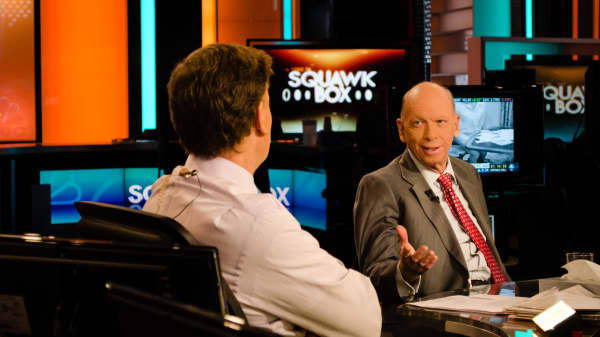U.S. stocks may have closed at five year highs last week, but a long-time market watcher told CNBC on Wednesday that the S&P 500 Index could see a correction from current levels before recovering by year's end.
"I have a bearish outlook," said Byron Wien, Blackstone Advisory Partners vice chairman. "The market will have a swoon here — trade at 1,300, down 10 percent from where it is right now. ... [But] it will end the year pretty flat."







